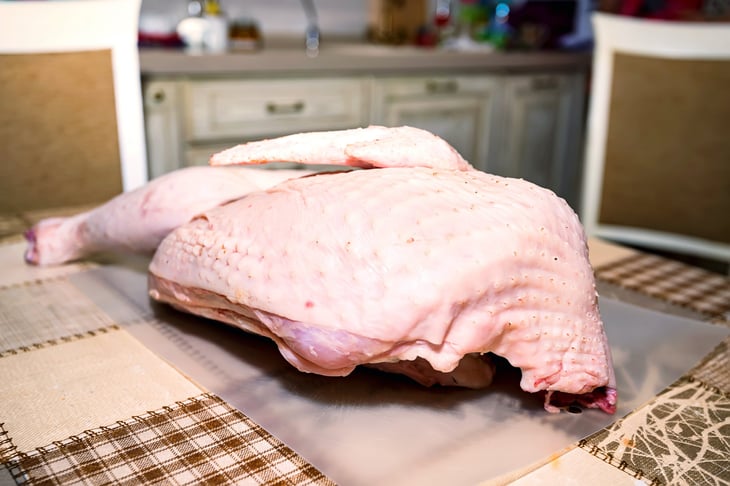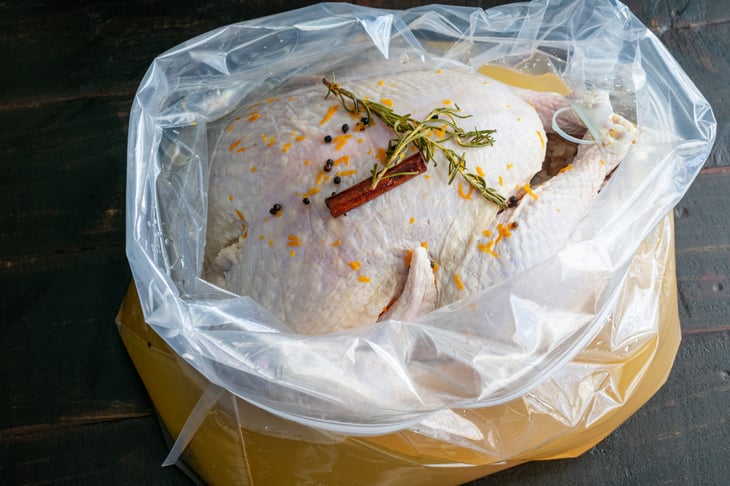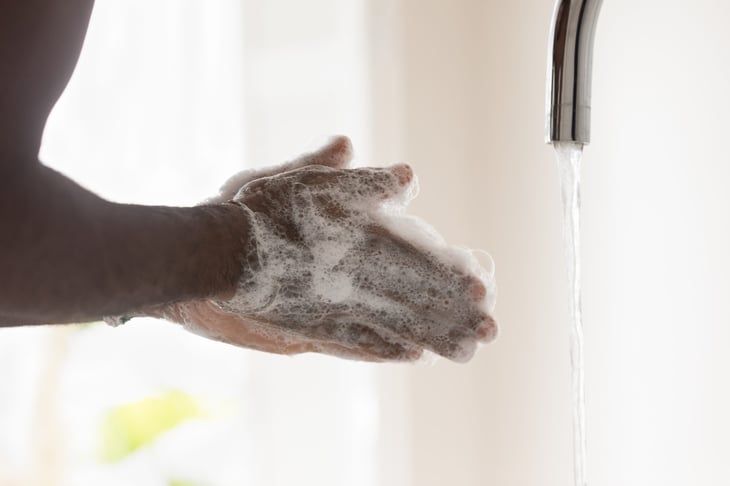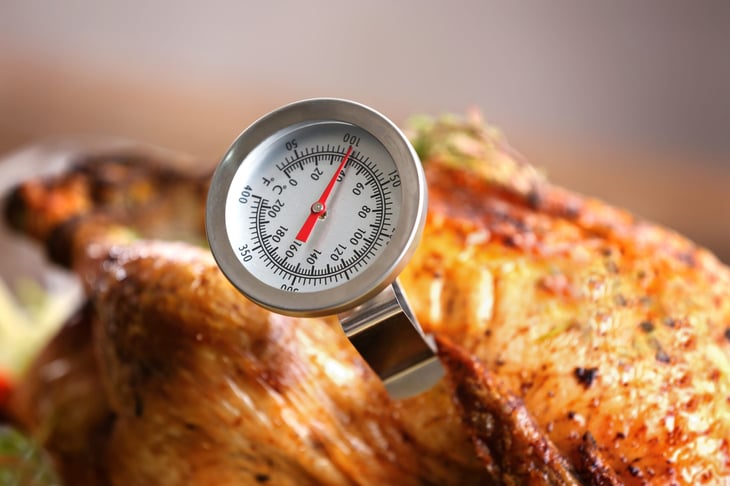
You don’t want this Thanksgiving to be remembered as “The Year Everybody Except the Vegetarians Got Salmonella.”
It’s a real risk, however. Raw turkey and its juices can “contaminate anything they touch,” leading to foodborne illness, according to the Centers for Disease Control and Prevention. Salmonella is responsible for nearly 27,000 hospitalizations and 420 deaths each year, not to mention hundreds of thousands of stomachaches.
The following information can help keep the guests in your home safe from food poisoning this Thanksgiving. Don’t make these dangerous mistakes.
1. Letting turkey sit out to thaw

Freezing doesn’t kill any bacteria that might be on a turkey. Once the bird warms to 40 degrees, those bacteria can start multiplying. That’s why the U.S. Department of Agriculture recommends thawing a frozen turkey in the fridge. Allow 24 hours for every 4 to 5 pounds of bird. Consult FoodSafety.gov’s tables for more on thawing and roasting times.
If you need to speed up the process right before cooking, here are two options to finish the thaw:
- Cold water: Put the frozen turkey inside a leak-proof plastic bag (or leave it sealed in the plastic it came in) into a sink or container full of cold water. Change the water every half-hour, making sure to use cold water each time. Thawing should take 30 minutes per pound.
- Microwave: Use your microwave owner’s manual to determine the right power level to use, the number of minutes to thaw the bird per pound, and the size of the turkey that can be put into the appliance. If the turkey seems to be cooking, instead of just thawing, let it rest for five minutes and then resume thawing.
With both of the non-fridge thawing methods, start cooking the bird immediately after it’s thawed.
Incidentally, it’s possible to cook a solidly frozen turkey. But it will take at least 50% longer.
The U.S. Department of Agriculture has more tips for safely thawing a frozen bird.
2. Washing the turkey

More than two-thirds of home cooks wash a turkey before cooking it. Bad idea, according to the USDA. That’s because do so transfers harmful bacteria to your workspace and other foods. The splash zone can extend as far as 3 feet away.
Instead, put the unwrapped bird directly into the pan. Cooking a turkey to an internal temperature of at least 165 degrees kills any bacteria.
A brined turkey, however, does need to be rinsed before it goes into the oven. Here’s how to cut the risk of bacterial contamination:
- Move everything (dish drainer, sponges, etc.) away from the sink and cover the surrounding area with paper towels.
- Position the roasting pan right next to the sink.
- Wash the sink with hot, soapy water and rinse thoroughly. Then fill it with several inches of cold water.
- Run the cold-water faucet gently — avoiding splashing — through the turkey’s cavity. Hold it up to drain, then put it in the roasting pan.
- Throw away the paper towels and use hot, soapy water to clean the sink and workspace. Only then should you put the pan in the oven.
3. Not washing your hands right after handling raw turkey

Bacteria, remember? Don’t stop for a moment, even to reply to a text or comfort a child.
If you have to pause the prep, wash your hands thoroughly with soap and water. Lather for at least 20 seconds before rinsing.
The CDC explains how to wash hands before, during and after food prep.
4. Not using a meat thermometer

There is no substitute for a meat thermometer.
Maybe your mom didn’t have one (mine didn’t) and nobody got sick. We were all just lucky. Bacteria can survive internal temperatures below 165 degrees.
Check for doneness by inserting the food thermometer into the thickest parts of the breast, thigh and wing joint. Also, put the thermometer into the center of the stuffing. The temperature in each of these spots must reach 165 degrees or more.
5. Letting cooked turkey sit out for hours

After a great Thanksgiving dinner, it’s pleasant to linger at the table, reminiscing about previous holidays and having just a smidgen more pumpkin pie.
Linger all you like, but don’t let food sit around at room temperature. According to the CDC, all perishable foods should be refrigerated within two hours. And, if it’s 90 degrees or warmer outside — or in any car you might transport leftovers in — get all food wrapped and safely stored within one hour.





Add a Comment
Our Policy: We welcome relevant and respectful comments in order to foster healthy and informative discussions. All other comments may be removed. Comments with links are automatically held for moderation.